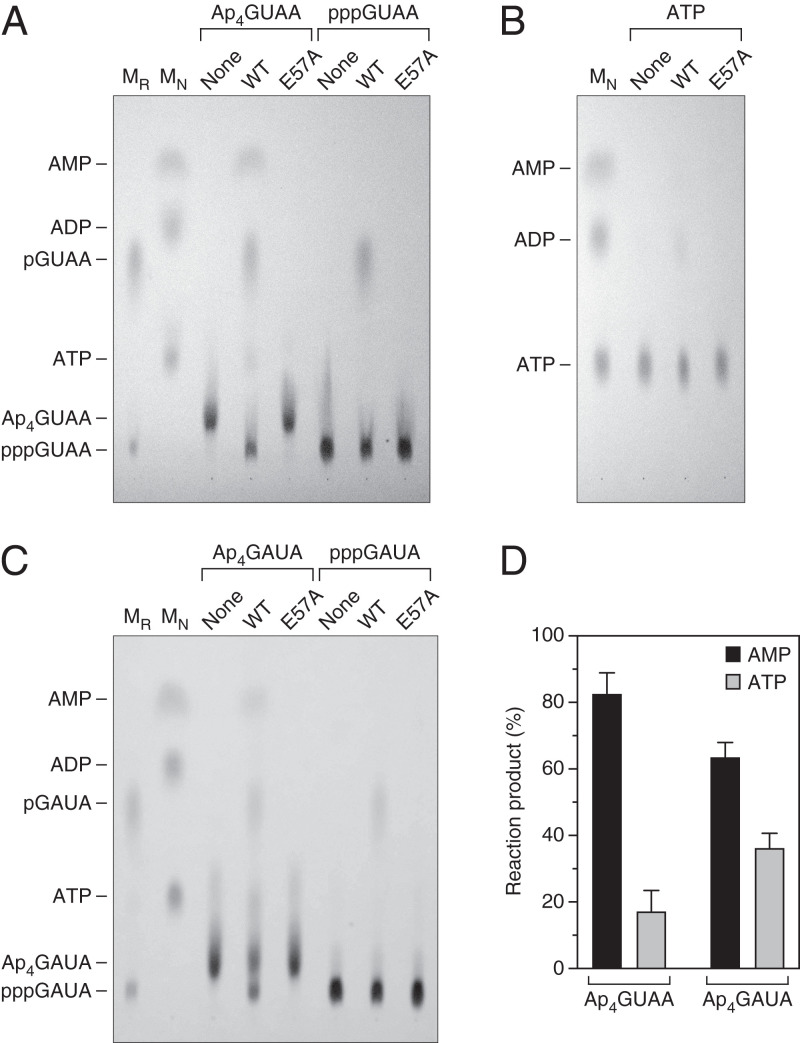Fig. 6.
Products of RppH-mediated decapping in vitro. (A) Ap4GUAA. Ap4GUAA and pppGUAA were examined by thin-layer chromatography on fluorescent PEI-cellulose plates before (None) and after treatment with wild-type RppH (WT) or catalytically inactive RppH (E57A). An equimolar mixture (MN) of ATP, ADP, and AMP and a separate mixture (MR) of pGUAA and pppGUAA were included as markers. Substrates and products were detected by UV shadowing. (B) ATP. The slow reaction of ATP with RppH was examined by thin-layer chromatography as in A. (C) Ap4GAUA. The products of the reaction of Ap4GAUA and pppGAUA with RppH were examined by thin-layer chromatography as in A, except that pGAUA and pppGAUA were substituted as RNA markers (MR). (D) Products of decapping. The percentage of the Ap4GUAA and Ap4GAUA cap released by RppH as AMP or ATP was calculated by quantifying the AMP and ATP spots and determining their ratio. Each value is the average of two to three measurements. Error bars correspond to standard deviations. P = 0.0002 for Ap4GUAA and 0.02 for Ap4GAUA.

